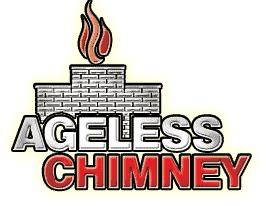Chimney Sweep in Sutton Place, NY
What our clients say




Read About Us
Browse Masonry & Brickwork
contact us
Professional Chimney Sweep Services in Sutton Place, NY Explained

Comprehensive Chimney Sweep Services
At Ageless Chimney, we provide comprehensive chimney sweep services to residents of Sutton Place, NY. Our certified chimney sweeps ensure your chimney is free from debris and hazardous build-up.
Whether you need a routine cleaning or a more intensive inspection, our team in Sutton Place, NY is equipped to handle all your chimney needs. We proudly serve the entire New York City area.
Experienced Professionals
Our certified chimney sweeps have years of experience ensuring high-quality service. Their expertise guarantees that your chimney will always be cleaned thoroughly and safely.
Customer Satisfaction
We pride ourselves on our excellent customer service and satisfaction rates in New York City. Our clients trust us for our reliability, professionalism, and commitment to keeping their homes safe.
Reliable Service
With Ageless Chimney, you can trust that your chimney is in expert hands. We provide thorough and reliable cleaning services that meet the highest industry standards.

Why Choose Our Certified Chimney Sweep Services?
Choosing a certified chimney sweep is crucial for maintaining your chimney’s safety and efficiency. At Ageless Chimney, our team is trained to the highest standards, ensuring thorough and professional service every time. We adhere to industry best practices, ensuring that your chimney is in safe hands. Our certification means we have the knowledge and expertise to handle any chimney issue, no matter how complex.
We use state-of-the-art equipment to inspect and clean your chimney. Our advanced tools allow us to detect and address potential problems before they become serious, saving you time and money in the long run. We understand that a clean chimney is vital for the health and safety of your home. That’s why we take our job seriously, providing comprehensive services beyond mere cleaning to detailed inspections and preventative maintenance.
Serving New York City, our reputation for excellence is built on years of reliable service and customer satisfaction. We believe in building lasting relationships with our clients through exceptional service and transparency. When you choose Ageless Chimney, you’re not just getting a service but a partner dedicated to keeping your home safe and your chimney in top condition.

Expert Chimney Cleaning in Sutton Place, NY
Regular chimney cleaning is essential for preventing dangerous build-ups of soot and creosote. In Sutton Place, NY, Ageless Chimney offers expert chimney cleaning services designed to keep your chimney functioning efficiently. Our team understands the importance of a clean chimney and works diligently to remove all debris and buildup that can pose a risk to your home. We provide a thorough cleaning that enhances the safety and efficiency of your chimney.
Our experts are dedicated to maintaining the highest standards of cleanliness and safety. We start with a comprehensive inspection to assess the condition of your chimney, identifying any areas that need attention. Using professional-grade equipment, we clean your chimney from top to bottom, ensuring every part is noticed. This meticulous approach helps prevent chimney fires and improves the overall performance of your fireplace or stove.
Serving the residents of New York City, we take pride in our commitment to excellence. We understand that a well-maintained chimney is crucial for the comfort and safety of your home. That’s why we offer flexible scheduling and prompt service to meet your needs. Contact us at 516-795-1313 to schedule your chimney cleaning today and experience the difference that professional care can make.
